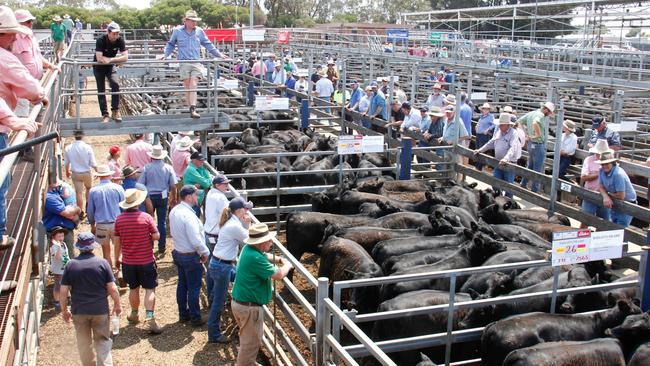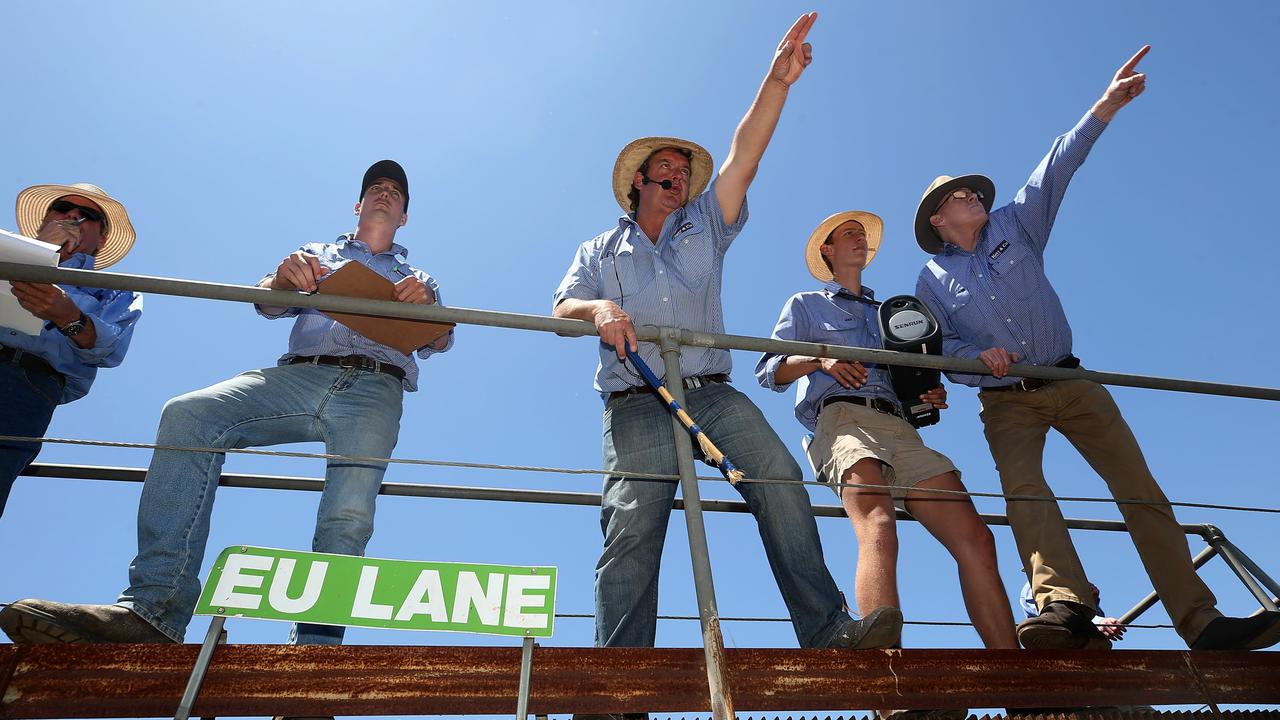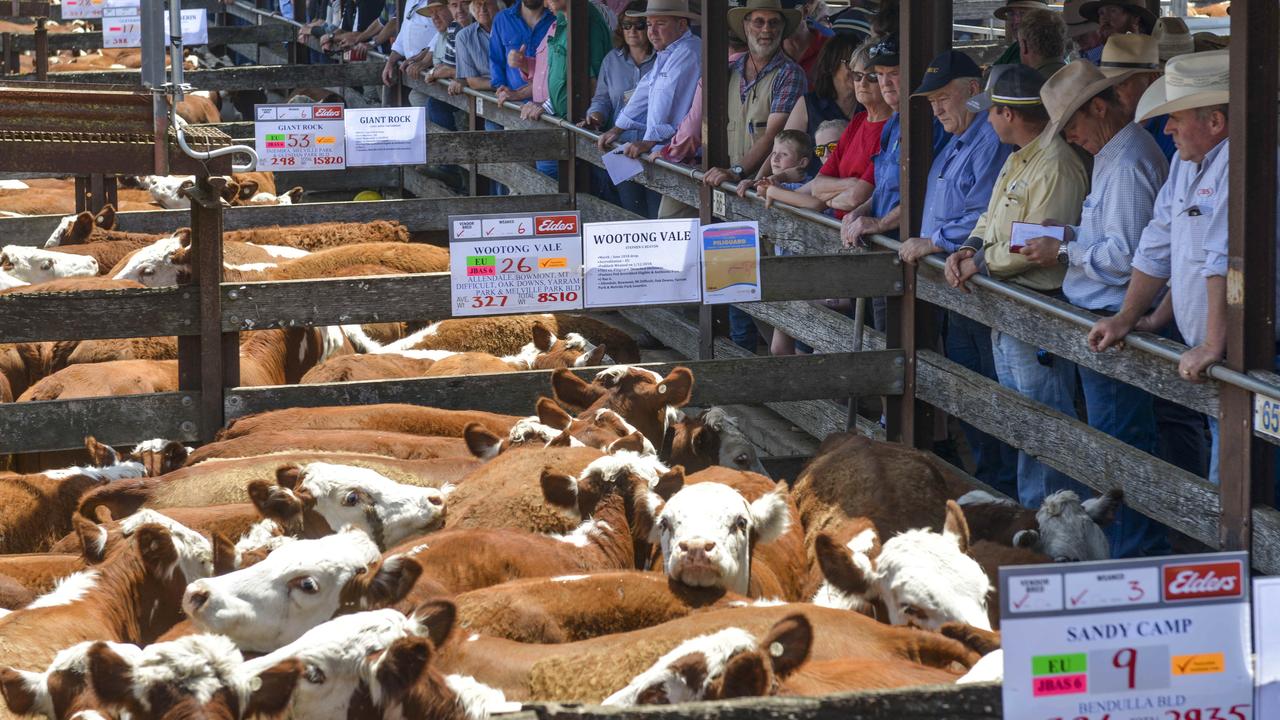Much to gain when it finally rains
If predictions around cattle supply post-drought prove to be true, the beef market could deliver plenty of upside for producers.

“NEXT year I’ll either be back in a brand new Mercedes or a hearse.”
These were memorable words from NSW beef producer Paul Mason, that sum up the risk versus potential gain situation the livestock industry is presently in.
He’d just defied the dry season to again take home more than 200 of the top Hereford steer calves from Hamilton to his property east of Dubbo in Central West NSW.
The simple analysis from the New Year calf sales is that if predictions around cattle supply prove accurate after drought, floods and now bushfires, the beef market should deliver plenty of price upside.
As it stands trading was favourable, with buyers able to purchase well-bred lines of replacement steers for 280c/kg to 320c/kg liveweight or similar money to what feedlots and the main grass-fed bullock programs have been offering for finished cattle.
The general run of heifers were also deemed buyable at 240-275c/kg.
South Australian agent Simon Mulraney of Pinkerton Palm Hamlyn & Steen, Naracoorte, said buyers were in a good position and hopeful of improving it by the time the calves from recent sales are ready to be sold. He bought 450 steers at Casterton last week. “Price-wise we are buying in a similar cents-a-kilogram range to what we are getting for bullocks and that is usually not the case — often you have to pay 20, 30 or even 50c/kg more for young stores so there was definitely a buying opportunity,” he said.
“And hopefully it rains in the north and (by spring) they will be worth a fair bit more than what they are now.”
The season was the centre of many conversations at sales last week, and it was interesting to note how the vocabulary varied from when it rains to if it rains.
Even auctioneers were pulled up for using the pessimistic view of “if” the drought breaks during pre-sale rambles.
Obviously the timing and extent of rain this autumn and beyond will determine how prices react.
Although market watchers like Marc Greening, of Injemira Herefords, Book Book, NSW believe the value of finished cattle will still rise even if there isn’t widespread rain.
“I think cattle are very buyable at these cents-a-kilogram rates when you analyse the strength of the beef industry and the potential upside,” Mr Greening said.
“Even if it doesn’t rain I think we will end up with a two-fold market where finished cattle will go through the roof due to a lack of supply, while store calves will remain hard enough to shift.”
There were certainly strong price signals coming out of NSW and Queensland — from feedlots and companies that wouldn’t normally buy weaners but were at the forefront of competition for heavy steers and some heifers — to suggest finding cattle with weight out of the north is going to be difficult from about March on.
Although there are oddities to this, and the beef market (or lamb for that matter) hasn’t sailed into the new year completely smoothly.
Agents from South Gippsland and the Western District said there was a backlog of bullocks to be killed, with stock that were booked into abattoirs in late November just entering meatworks now.
There were reports of some processors being booked ahead well into next month and March for heavy steers and cows.
Nutrien Leongatha agent Terry Ginnane said it appeared the distorted season had resulted in a flush of heavy steers becoming available at once.
“The early forecasts were that there wasn’t going to be a lot of bullocks out of the northeast but then the grass season turned out OK and people were able to hold and put weight on, and now we seem to have a situation of everyone selling at once,” Mr Ginnane said.
“Luckily for use the steers we have been holding have been putting on weight and we have a lot of extra heavy bullocks (700kg-plus) to go — but I think the flush will be short-lived.”
From a demand perspective, there are still rumblings about the Chinese market and deals for meat being a lot more subdued than the peak of the trading action back in spring.
January 1 also marked the start of a new trade deal between the US and Japan, which gives the US much greater access at lower tariff levels into this high-value Asian market
It means the gloss has come off two of Australia’s key export markets, and while cattle supply will be a significant factor in driving prices going forward, there is still some risk attached to how global demand and buying trends will play out.
For calf producers, last week’s markets also highlighted the risks stemming from breed and quality.
There was more buying depth for Angus steers in the Western District, and flat spots in the markets were mainly connected to plainer Herefords that showed less weight and breed quality.
Some people don’t like direct comparisons, but the Hamilton sales do give an insight into breed performance with cents-a-kilogram averages available from the markets held by the independent agents.
From these two sales:
1674 heavy Angus steers above 350kg to about 440kg averaged 325c/kg or $1233;
1942 Angus steers weighing 250-350kg averaged 320c/kg or $1019.60;
272 heavy Hereford steers averaged 317c/kg or $1024; and
875 Herefords weighing 250-350kg averaged 307c/kg or $945.
It shows an average variance of 8c/kg to 13c/kg in favour of Angus, which can equate to a considerable dollar-a-head difference of $50 to $200 depending on weight.
The figures also show how volume-wise Angus are now dominating, and breed choice is an issue facing producers even if it is a touchy subject.
The Weekly Times spoke to a long-term breeder of Herefords at Hamilton who will present a line of black baldy calves next January after making the decision to switch to Angus bulls after a 50 year association with pure Hereford.
The breeder, who didn’t want publicity at this stage, said the “risk” was too great to remain with Hereford in the face of more orders and stronger and more consistent demand for Angus cattle.
He questioned what would happen if specialist buyers like Paul Mason, who puts a floor in the top EU Hereford steers at Hamilton, couldn’t operate.
Mr Mason said buying steers this year in the midst of the worst drought his NSW property had seen was a tough decision.
“It’s the worst I’ve ever seen this country and it was one of the hardest decisions I’ve ever made in terms of buying or not buying cattle,” Mr Mason said.
“But my gut feeling is that this drought is coming to an end.”
It prompted his tongue-in-cheek remark about the Mercedes car or a hearse.
Although forecasts of up to 60mm of rain in the next week could at least put wheels on the ground, if not a full Mercedes.


